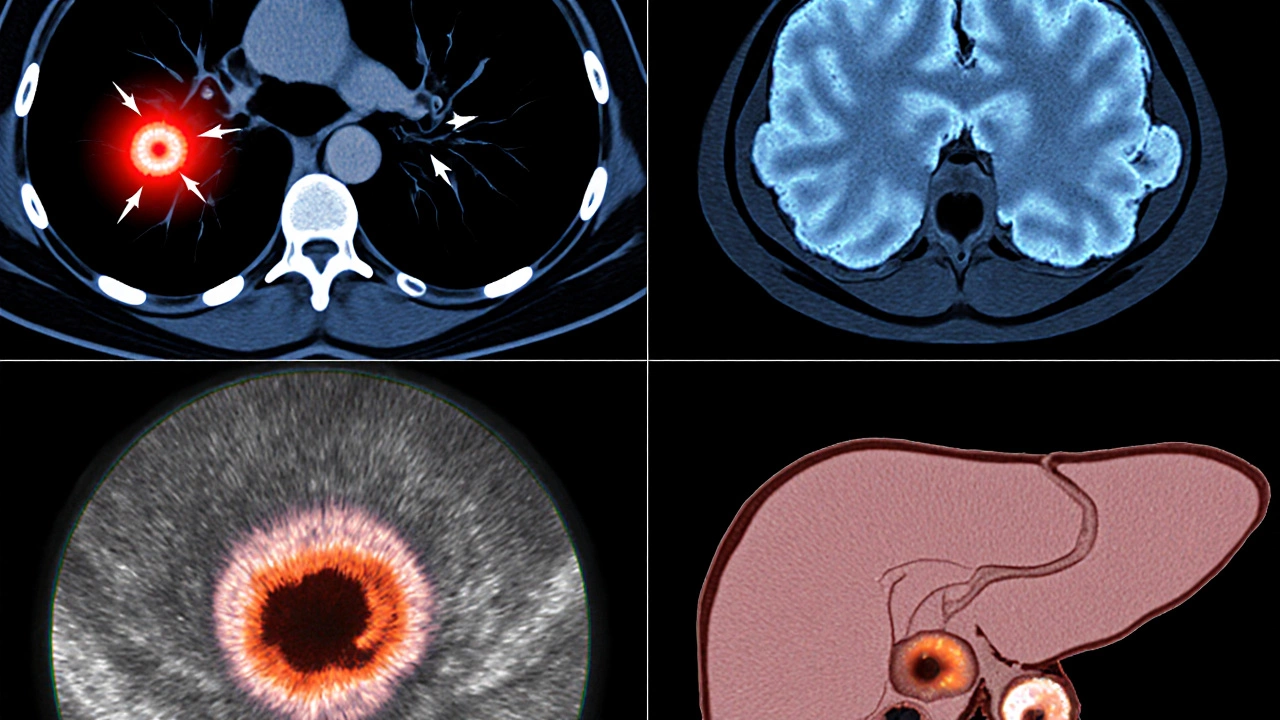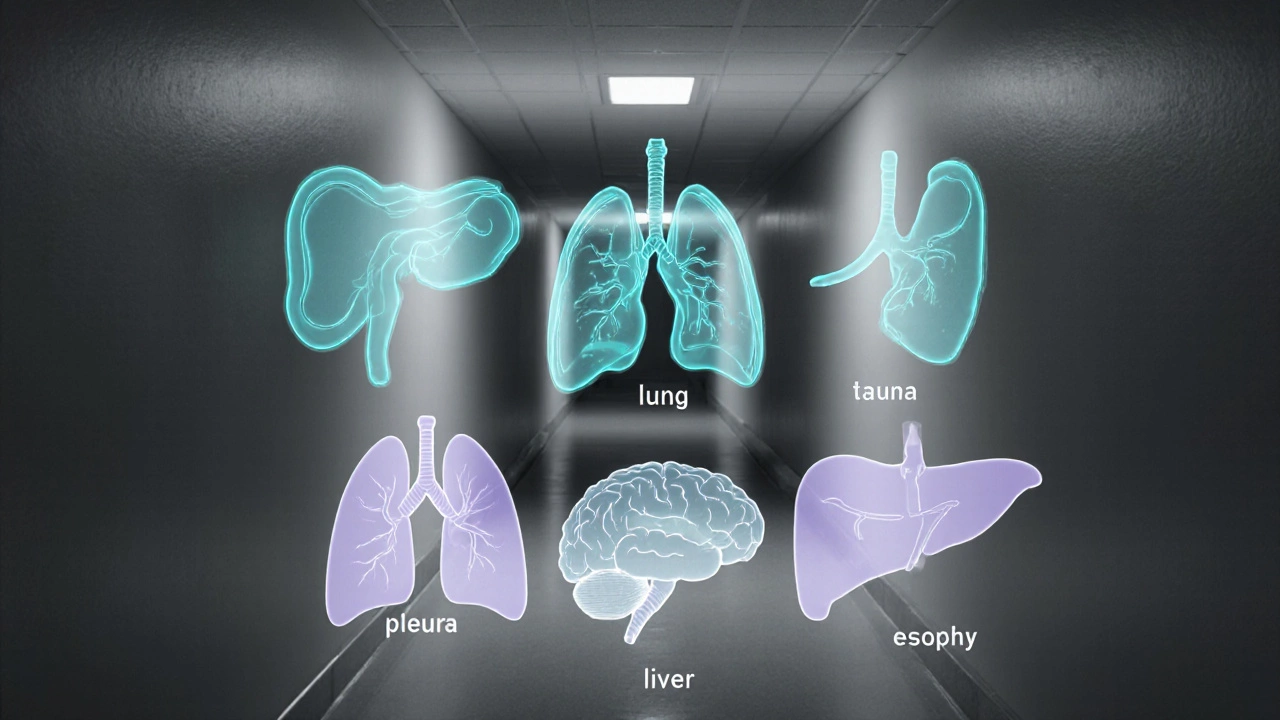Cancer Survival Rate Calculator
Cancer Survival Calculator
View the latest five-year survival rates for cancers with poor prognosis. This tool is based on the 2023-2025 SEER data.
Select a cancer type to see the survival statistics.
Key Takeaways
- Pancreatic, small‑cell lung, mesothelioma, glioblastoma, and advanced liver cancers have five‑year survival below 10%.
- Late diagnosis, aggressive biology, and limited treatment options drive the low numbers.
- Early detection, clinical‑trial enrollment, and multidisciplinary care can modestly improve outcomes.
- Understanding each cancer’s survival stats helps patients make informed decisions about screening and therapy.
- Staying up‑to‑date with emerging therapies is crucial for these high‑risk cancers.
What Does “Poor Survival” Mean?
When oncologists talk about survival they usually refer to the five‑year survival rate - the percentage of patients still alive five years after diagnosis. A rate under 20% is considered poor, and anything below 10% signals a very aggressive disease. These statistics come from large registries such as SEER (2020‑2023 cohort) and are adjusted for age, stage, and treatment era.

Top Cancers With the Lowest Five‑Year Survival
The following list gathers the cancers that consistently rank at the bottom of survival charts. Each entry includes the latest survival data, typical stage at diagnosis, and why outcomes are so grim.
| Cancer Type | 5‑Year Survival | Median Survival (months) | Common Stage at Diagnosis | Key Challenge |
|---|---|---|---|---|
| Pancreatic cancer is a highly aggressive malignancy of the pancreas with one of the lowest five‑year survival rates worldwide. | 8% | 6‑12 | Stage III-IV | Early spread, dense stromal barrier |
| Small‑cell lung cancer is a fast‑growing lung tumor that accounts for about 15% of lung cancers. | 7% | 9‑12 | Stage IV (metastatic) | d>Rapid proliferation, early metastasis|
| Mesothelioma is a malignancy of the lining of the lungs or abdomen caused mainly by asbestos exposure. | 10% | 12‑18 | Stage III-IV | Late symptom onset, limited effective drugs |
| Glioblastoma is the most common primary brain tumor in adults, known for its infiltrative growth. | 6% | 14‑16 | Often diagnosed at Grade IV | Blood‑brain barrier, resistance to chemo |
| Hepatocellular carcinoma is the predominant form of liver cancer, frequently arising in cirrhotic livers. | 12% | 10‑14 | Stage III-IV | Underlying liver disease limits treatment options |
| Esophageal cancer is a tumor of the esophageal lining, with squamous and adenocarcinoma subtypes. | 15% | 12‑18 | Stage III-IV | Silent early phase, rapid progression |
| Advanced ovarian cancer is an often hidden gynecologic cancer typically diagnosed after spread to the peritoneum. | 19% | 20‑24 | Stage III-IV | Late symptom onset, chemo resistance |
| Gallbladder cancer is a rare biliary tract tumor with a dismal prognosis due to late presentation. | 9% | 8‑12 | Stage III-IV | Often discovered incidentally, limited surgical options |
Why Do These Cancers Have Such Low Survival?
- Late Diagnosis: Most symptoms appear only after the tumor has infiltrated vital structures or spread to distant organs.
- Biological Aggressiveness: Mutations that drive rapid cell division (e.g., KRAS in pancreatic cancer, TP53 loss in glioblastoma) make tumors hard to control.
- Therapeutic Barriers: Dense stroma in pancreatic tumors, the blood‑brain barrier in glioblastoma, and the fibrotic environment of mesothelioma limit drug delivery.
- Comorbid Conditions: Liver and lung cancers often arise in patients with cirrhosis or chronic obstructive pulmonary disease, reducing treatment tolerance.
- Limited Effective Drugs: For many of these cancers, standard chemotherapy offers modest benefit, and targeted therapies are still in early phases.

How Can Outcomes Be Improved?
Even though the numbers look bleak, several strategies are shifting the curve:
- Screening & Early Detection: Low‑dose CT for high‑risk smokers can catch lung cancer before it spreads. Endoscopic ultrasound (EUS) helps identify pancreatic lesions in families with hereditary pancreatitis.
- Multidisciplinary Care: Combining surgery, radiation, and systemic therapy in specialized centers improves survival by 2‑4% for many of the listed cancers.
- Clinical Trials: Immunotherapy (e.g., PD‑1 inhibitors) has shown promise in mesothelioma and certain gastric‑type esophageal cancers. CAR‑T cell trials are ongoing for pancreatic and ovarian tumors.
- Precision Medicine: Genomic profiling can uncover actionable mutations (e.g., BRCA2 in pancreatic cancer) that allow the use of PARP inhibitors.
- Supportive Care: Early palliative involvement enhances quality of life and may extend survival by maintaining nutritional status and reducing hospitalizations.
Practical Steps for Patients and Caregivers
- Know your risk factors - family history, smoking, asbestos exposure, chronic hepatitis, or inflammatory bowel disease.
- Discuss screening options with your doctor. Even if you’re not in a formal high‑risk program, imaging may be warranted based on symptoms.
- Ask about genetic testing if you have a strong family history; results can guide targeted therapies.
- Consider enrolling in a clinical trial. Websites like ClinicalTrials.gov list studies by cancer type and location.
- Stay informed about new FDA approvals - the landscape for poor survival cancers changes rapidly with novel agents each year.
Frequently Asked Questions
Which cancer has the lowest five‑year survival?
Pancreatic cancer consistently records the lowest five‑year survival, hovering around 8% in the United States.
Can early screening improve survival for these cancers?
Yes. For high‑risk groups, low‑dose CT scans for lung cancer and endoscopic ultrasound for pancreatic lesions have shown earlier stage detection and modest survival gains.
Are there any promising new treatments?
Immunotherapy combinations, PARP inhibitors for BRCA‑mutated pancreatic cancer, and CAR‑T cell therapies in early trials are generating hope for traditionally low‑survival tumors.
Should I seek a second opinion?
Absolutely. Treatment plans for aggressive cancers often involve complex decisions; a second opinion at a high‑volume cancer center can uncover clinical‑trial options or specialized surgical expertise.
What lifestyle changes can help?
Quit smoking, limit alcohol, maintain a healthy weight, and manage chronic infections like hepatitis B/C. These steps reduce the risk of developing many of the cancers listed.
